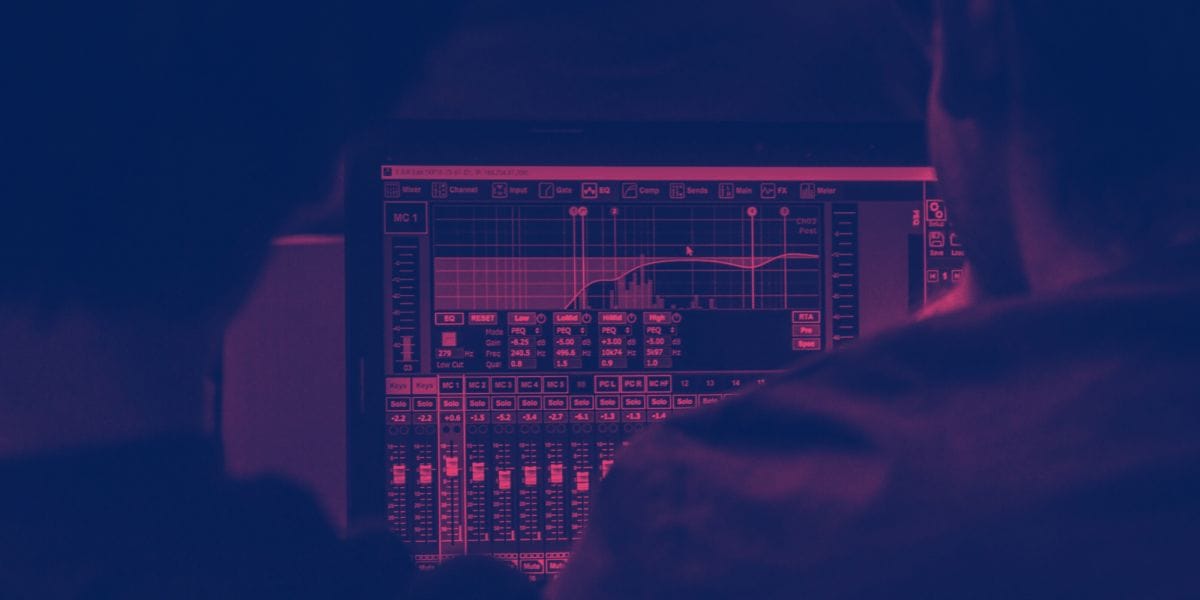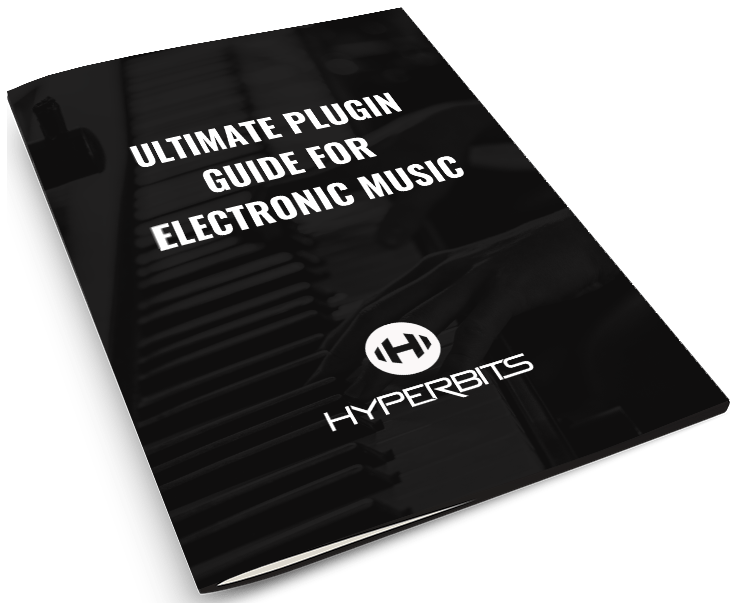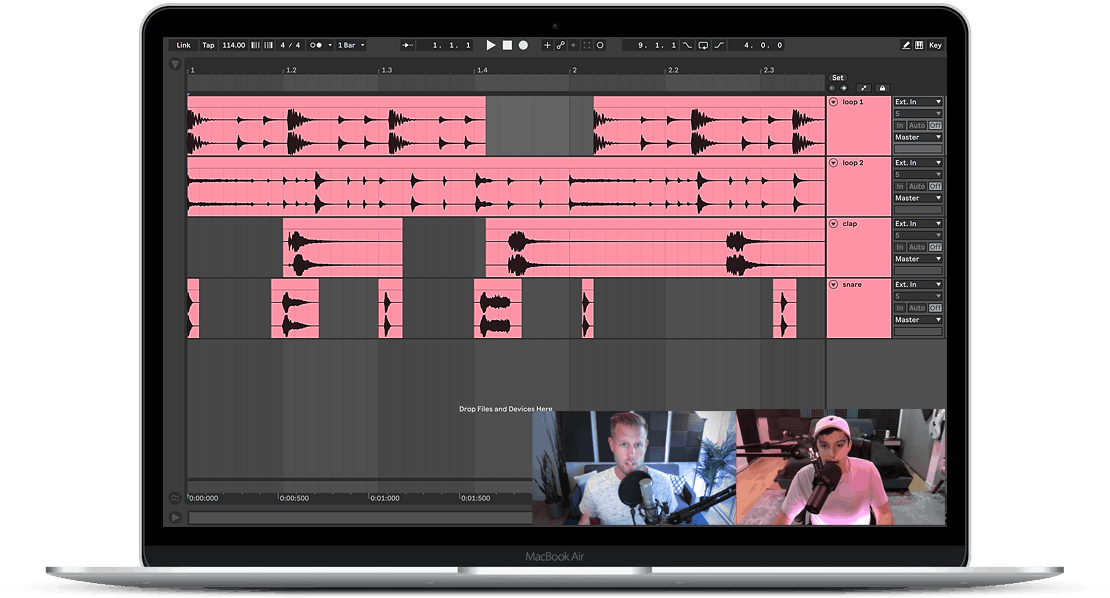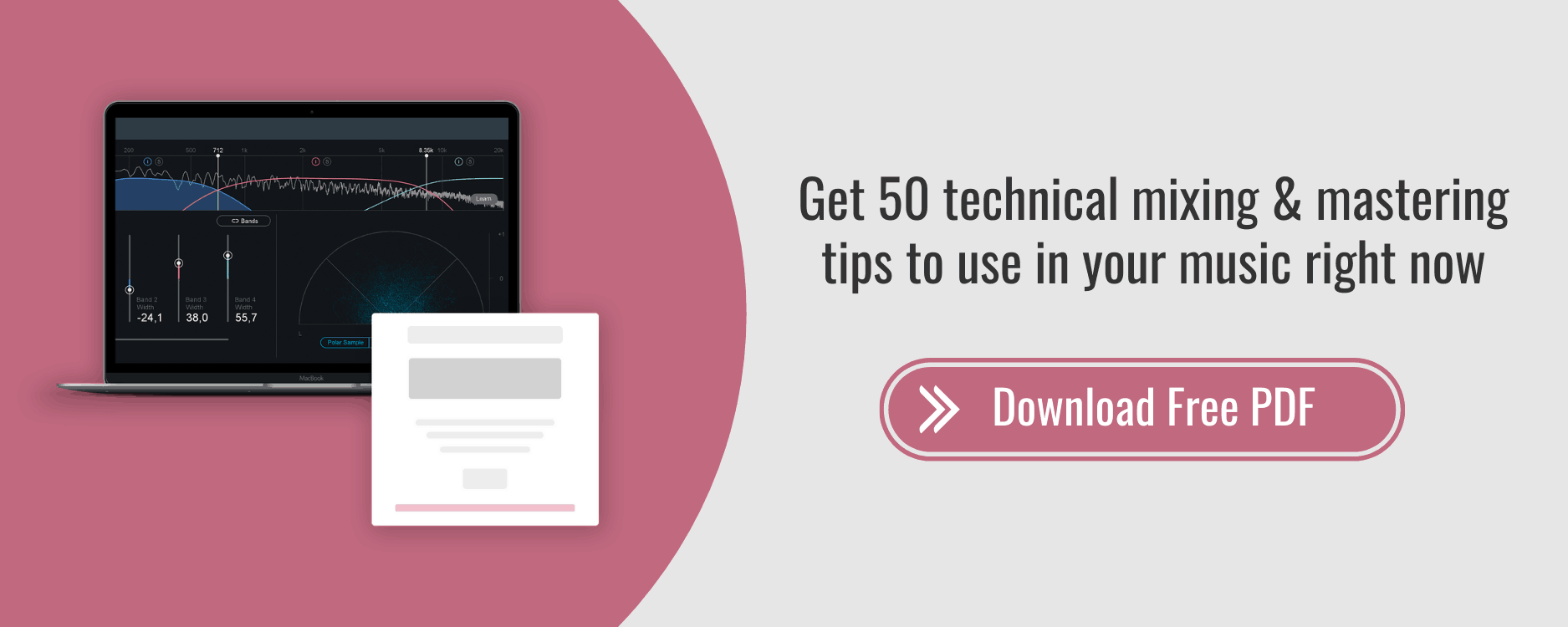The Top 20 Best EQ Plugins in Music Production
“If it sounds good, it is good.”
— Duke Ellington
Because there are so many EQ plugins in the music production landscape, I think it’s necessary to create the be-all, end-all list of the top 20 best EQ plugins today. If you’re a producer, I’m sure you understand how important EQ is — after all, it’s how you:
- Create a balance between all the sounds in your track
- Make things sound warm and full, light and airy, or clean and present
- Get rid of muddiness or unwanted frequencies
- Add organic, old-school analog flavor to digital sounds
Great EQ work is fundamental to achieving clean mixdowns and creating great tracks. But, you have a ton of EQ plugins to choose from — let’s start by breaking these down into two main categories of plugins and two types of EQ we want to apply.
Categories of EQ Plugins — Digital vs. Analog Emulation
Digital EQs are probably what you are most familiar with, and what you use most often. These are the stock DAW EQs where you can see a frequency spectrum, select a frequency, and start carving away. These EQs are precise, visual, and pretty user friendly. What they usually lack, though, is personality and flavor. Enter the analog emulation EQs…
Before the advent of digital music, sound engineers relied on physical EQ units to shape their mixes. What these analog EQs lacked in precision and flexibility they made up for in warmth, character, and musicality (in essence, how natural they feel). Lucky for us, we don’t need to hunt down a Pultec EQ from the 1950s and spend top dollar just to take it home — plenty of plugin creators have made emulations of these old favorites. That said, before we jump into the Best EQ plugins, let's take a look at EQ applications.
Types of EQ Applications
I’m not going to teach you how to use an EQ plugin in this article. If you’re interested, I recommend checking out:
- Mixing and Mastering Electronic Music in 2020
- 7 Must-Know EQ Tips with Fabfilter Pro-Q2
- Course: The Hyperbits Masterclass
- Course: Mix Master Flow
Before we go any further into the best EQ plugins in today's music production landscape, here is a 2-minute round-up of the absolute basics that you need to know when it comes to EQ.
Generally, though, you can think of two types of EQ uses: reductive (taking away frequencies) and additive (adding frequencies).
Broadly speaking, the precision and flexibility of digital EQs are well suited for the detailed work necessary for reductive EQ, while the flavor and warmth of analog emulation EQs lend themselves nicely to additive EQ boosts.
Of course, this all depends on what you are trying to achieve, so tread carefully here. To shed more light on our process for EQ, how about a list of the 20 best EQ plugins? These are the EQ plugins you must have in your arsenal to be making the best tracks you can.
Please note, we are not recommending that you go out and buy 20 different EQ plugins, this is simply our go-to list of the EQ plugins we use the most.
To learn more about what plugins you need and when you need to buy them, check out our Ultimate Plugin Guide.
That said, let’s get on with it!
Best Digital EQ Plugins
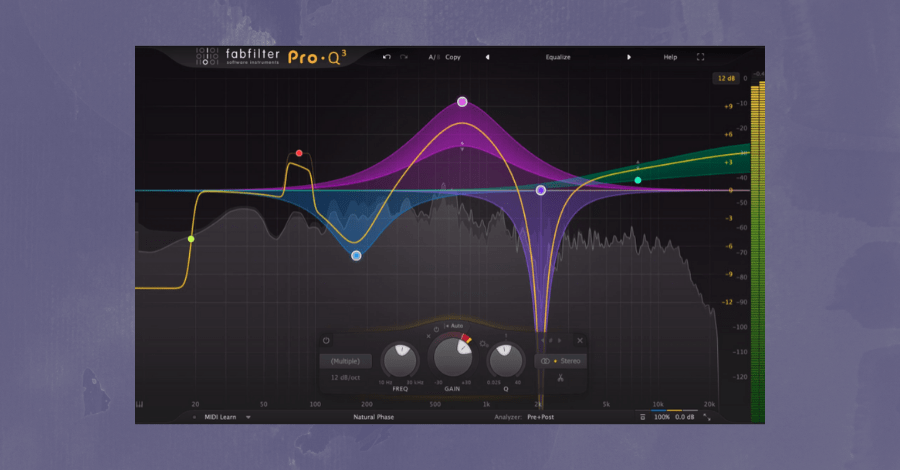
Price: $179
UX: The design of Pro-Q is a UX designer’s dream. It has a clean interface with color coding and intuitive controls that contribute to a very quick learning curve.
Character: Like many FabFilter plugins, Pro-Q is clean. You’re provided with virtually endless flexibility in the number of frequency bands, mid-side proportions, and a variety of natural/linear phase options. This EQ can make massive changes to your sound while still providing a transparent feel.
Uses: Pro-Q’s flexibility makes it a great choice for a variety of use cases. If I had to pick one, it is great for shaping software synths — all you need is one instance of Pro-Q to clean up low-end mud and carve away resonances to improve a variety of sounds.
Pro tip: How about 7 different pro tips? Its auto-gain feature is a must-use, allowing you to hear the difference in sound coloration without being influenced by changes in volume.

Price: $271
UX: The design feels a bit old school and is reminiscent of the stock Pro Tools EQs.
Character: The Oxford EQ is a great mix of digital flexibility with analog flavors. It’s four EQ modes provide different types of curves that allow for EQ moves ranging from surgical cuts to musical boosts. The price isn’t cheap, but this EQ sounds “expensive”.
Uses: The best uses vary based upon the mode you’re using. I love managing the mid-range of a vocal with the musical characteristics of the British EQ. The Speciality Constant Power EQ is an essential tool for broad boosts during mastering.
Pro tip: On a master chain, if you’re just missing a bit of coloration you want, add in the Oxford EQ with Type 4 (Speciality Constant Power EQ) to make smooth boosts or reductions of 1-2dB.
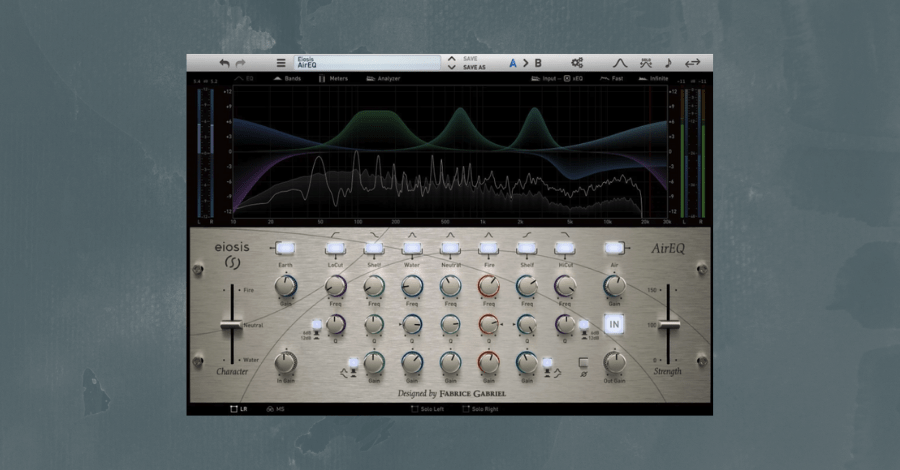
Price: $15/month (as part of the Slate All-Access Pass)
UX: A beautiful mix of digital visualization and analog aesthetics, this is a very pleasant EQ to use.
Character: The Air EQ has a flexible character — it has the ability to employ broad curves with it’s Water feature or add power and punch with Fire making it an easy choice for this best EQ plugins list.
Uses: This EQ is another one-stop-shop plugin. Need to add high-end air to a dull vocal recording? Appropriately named, the air feature’s results are top of the line. Need to add fullness to the bottom of your bass without making the track feel boomy? Earth is your move.
Pro tip: On a master chain, apply mid-side reductive EQ and adjust the Strength feature. This is effectively a Wet/Dry on the plugin, giving you optimal flexibility when shaping your stereo image.
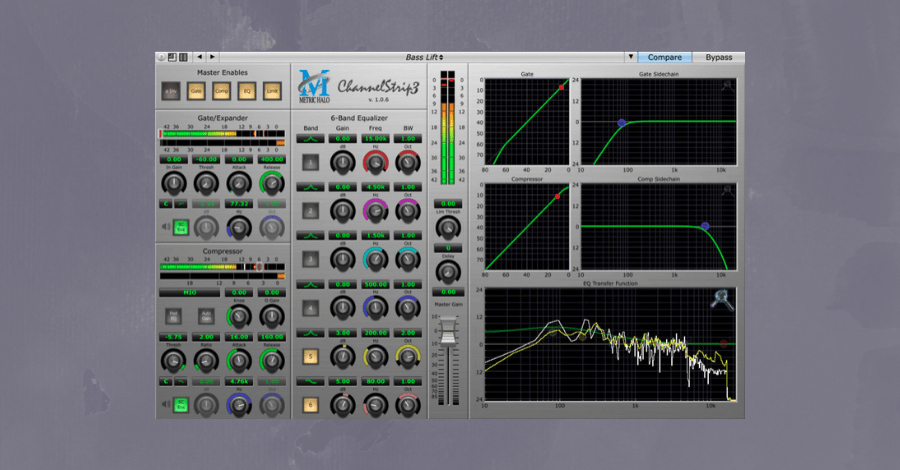
Price: $179
UX: Straight up ugly. It looks old and feels old (thankfully though, it doesn’t sound old).
Character: As the name suggests, ChannelStrip sounds like a channel strip. The EQ is transparent and clean, but it isn’t the most flexible (no variable slopes on the LP and HP) — while this can hold you back in some regards, it does force you to think as if you are mixing on a real console desk and be selective with your moves.
Uses: This EQ won’t provide you the endless flexibility you might need to manage complicated resonances or intricate mid-side work. It is a great choice for instruments of any kind, though, because its mid-range is rich and musical. After hearing it, there’s no wonder why Serban Ghenea uses it “on every session.”
Pro tip: On vocals, add a subtle broad cut around 300Hz and a subtle broad boost around 1000Hz to make the lead vocals pop out with extra clarity.

5. Soothe 2 EQ
Price: $199
UX: Sleek and cool. Soothe2 is visual and easy to use.
Character: Soothe2 is different from every other plugin on this list. It is a “dynamic resonance suppressor”, meaning that it analyzes and removes resonant frequencies in real-time. This is invaluable when dealing with real audio that has been recorded through a microphone.
Uses: The most obvious use for Soothe2 is on vocals. You can dynamically address sibilance on the high end and boominess on the lows. Not only does it sound great, but it is a huge time saver.
Pro tip: Add Soothe2 to piano tracks and use it to tame the high frequencies. This will help you make the most out of the power of high-velocity piano notes without suffering from harsh attacks.
Best Analog Emulation EQ Plugins
Remember how I mentioned that analog emulation EQs are modeled off of real pieces of gear? Well, all gear is not created equal — there are four famous analog EQs that have been emulated time and time again: Pultec, API, SSL, and Neve.
- Pultecs were innovative EQs when they were first introduced in the 1950s and brought transparent warmth to a variety of sounds
- APIs provided punch, clarity, and more flexibility than their counterparts, and were known for being especially musical
- SSLs provided precision and controlled brightness, making them a popular choice for cleaner pop music
- Neves carry a distinctly rich tone that helped shape both rock music and the early sounds of dance music in the 1970s
There are a variety of emulations of each, plus some remakes of some lesser-known EQs, below:
Pultec
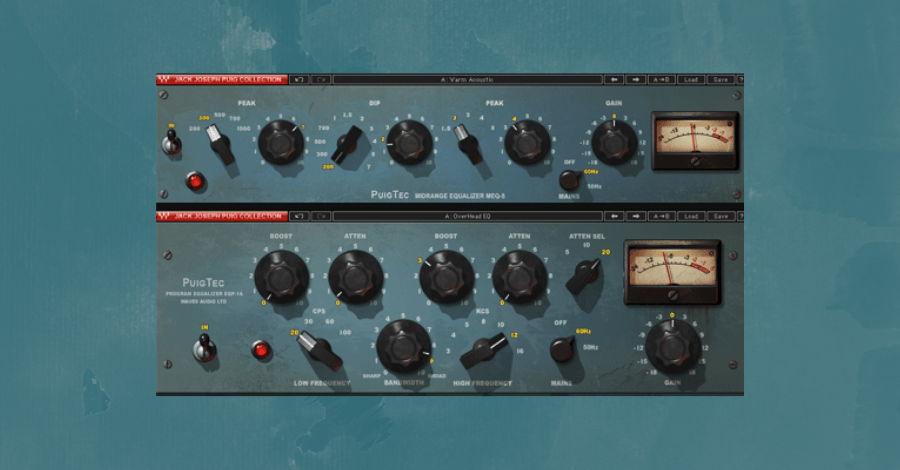
6. Waves Puigtec EQP1A and MEQ5
Price: $59 (for both)
UX: These plugins are the real deal. They look just like the original hardware units, with one exception — an output gain knob (thank you, Waves).
Character: Smooth, warm, and fat, these plugins are modeled specifically off of Joseph Puig’s own hand-crafted hardware units. Their overlapping frequency bands allow for unique resonant filtering, and the division of the Pultec into two plugins allows you to save on CPU if you don’t need all the functionalities of the original unit.
Uses: Virtually endless, but this EQ sounds magical on vocals — for example, use the high shelf boost of the EQP1A to open up the top end of vocals at 16kHz. Adding a low shelf boost at 60 Hz or 100Hz for bass does wonder in creating body and warmth.
Pro tip: At the end of your vocal chain, boost at 20Hz (yes, 20Hz) and attenuate at 20kHz for an old-school tube feel.

7. UAD Pultec Passive EQ Collection
Price: $299
UX: One step up from Waves, but very similar. These plugins are designed to look and feel like the real thing.
Character: I’ve used the Waves and UAD Pultec emulations side by side for years, and I have to say that UAD wins out on this one. The EQ just feels a little smoother and warmer than the Waves emulations. Of course, though, it comes with a significantly higher price tag.
Uses: The same as above. Another trick you can try is both boosting and attenuating the low end at 100Hz to take advantage of the overlapping curves (which creates some cool resonances).
Pro tip: Need an extra 2% of an analog feel on a sound? Throw one of these plugins on your channel and don’t touch anything.

Price: $199
UX: Very similar to both the UAD and Waves versions.
Character: Somewhere between the two versions above. If you want something a little richer than the Waves version, but don’t have a UAD unit to run their plugins, the Softube Tube-Tech is a great option.
Uses: A great choice for any of the same moves as the UAD and Waves plugins.
Pro tip: Crank the Dip gain on the MEQ5 to identify which frequencies are adding most to the warmth or presence of a sound. Once identified, turn off the Dip and add a subtle boost at that frequency.
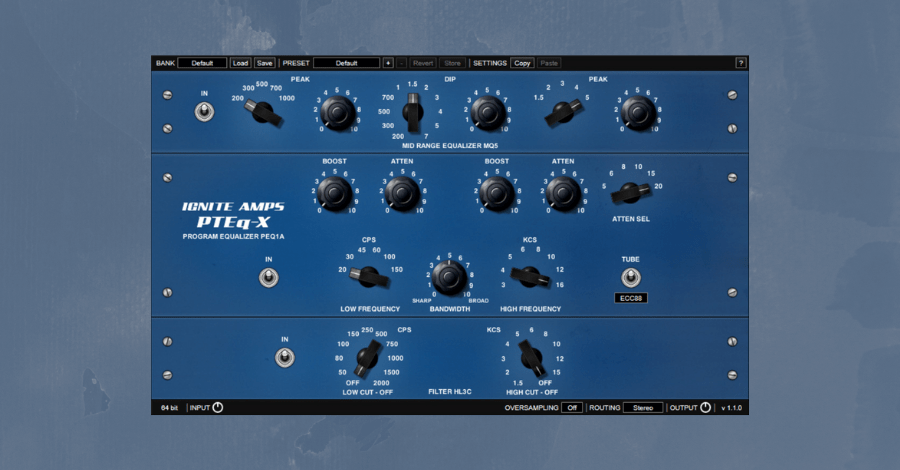
Price: Free
UX: It sort of feels like a toy version of the other Pultec emulations...
Character: Is this the best Pultec emulation around? No. But if you don’t have one in your arsenal, you should go download it now. For a free plugin, this thing sounds awesome.
Uses: You should get the picture by now...
Pro tip: Add a final push of warmth to a synth bus with a very subtle boost at 300Hz or 500Hz.
Best API Emulation EQ Plugins

10. Waves API-560
Price: $49
UX: Intuitive and straight-up cool. Anyone with minimal music production experience can immediately understand how to work the 560 (which definitely cannot be said about other API EQs), but its simplicity doesn’t stop you from feeling like an analog EQ master.
Character: The API sound is unique. You can really push frequency bands to stand out, but there is something magical in the API that doesn’t make them feel harsh. You can push sounds to be loud and proud, but they don’t feel overstated.
Uses: The 560 features 10 bands, each spaced an octave apart (doubled or halved frequencies between each band), so you don’t have a huge amount of specificity you can leverage. That makes the 560 a great choice for broad tone shaping after your surgical EQ work is finished.
Pro tip: Add boost at 16kHz to the end of your vocal chain. This sits above most sibilance, so you can add amazing-sounding “air” to vocals without undoing your de-essing work.
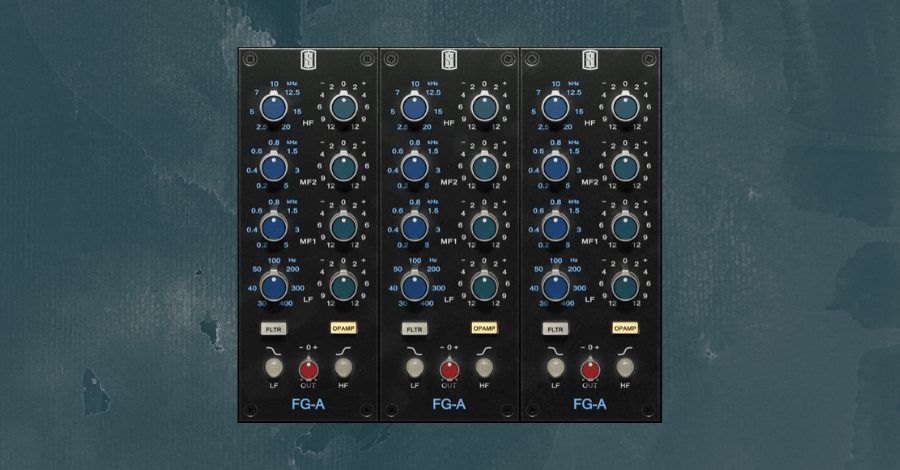
11. Slate FG-A
Price: $149 (or $15/month as part of the Slate All-Access Pass)
UX: Purists be warned, this is an API 550 EQ without the look of the original hardware. In the end, this is a good thing, because the original 550 is definitely not an intuitive interface. The setup is simple enough — frequency bands on the left, the amount of gain on the right.
Character: This is an API 550 emulation, not a 560 (like above). This means we have a lot more flexibility in our choice of bands to EQ. While this EQ still isn’t intended for surgical work, it provides more granular controls to be able to “fill in the gaps” in a sound. And, as expected with an API, it maintains a pleasant, smooth musicality.
Uses: This is a great “problem solving” plugin. Not enough body in your vocal? Add in some warmth in the low mids. Do your drums feel dull and flat? Give them a broad boost on the high end? This plugin fills the gap between the broad curves of an API 560 or a Pultec and the surgical capabilities of digital EQs.
Pro tip: On a bass, use the low band to boost at 100Hz (to add warmth and weight) and the low mid band to attenuate at 400Hz (to get rid of the mud).
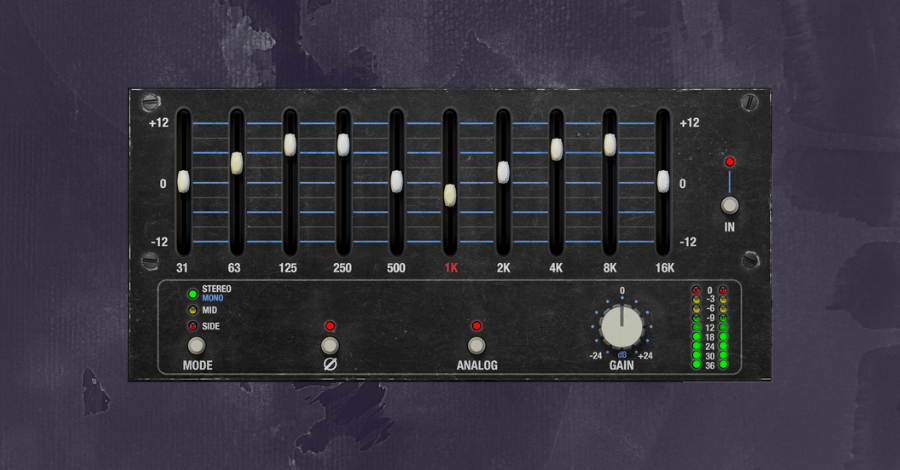
12. Red Rock EQ560
Price: Free
UX: Kind of like the Ignite Amps PTeq-X for Pultecs, the Red Rock EQ560 just feels like a cheap version of the other API emulation plugins.
Character: This is not the greatest plugin I have ever used. It probably will not be the greatest plugin you have ever used, either. But if you want an API EQ, and you aren’t ready to pull the trigger on a paid emulation, this is your best bet. It offers pretty smooth curves and can smoothly recolor sounds.
Uses: The same as the Waves API-560. Think broad, smooth coloration, not detailed surgical work.
Pro tip: Balance the mid-range of instruments by adjusting the relative volumes of each octave (each band on the 560 is spaced out one octave apart).
SSL
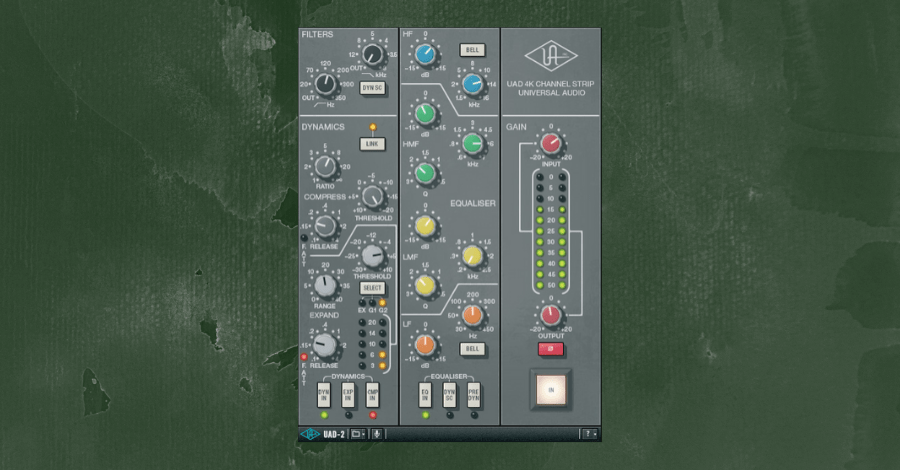
13. UAD SSL 4000 E Channel Strip
Price: $299
UX: Do you want to feel like a legendary, old-school producer or engineer? This UX will get you there. True to the original channel strip, the EQ on the SSL 4000 E Series features four adjustable bands plus HP and LP filters.
Character: Expensive. It just sounds like the real deal, through and through — this plugin is faithful to the original, which offered an unmatched blend of versatility and character.
Uses: Some of the most famous records of the last 50 years were mixed exclusively on SSL consoles (Tupac, Nirvana, Britney Spears…). From adding warmth and shine to instruments, to handling the tricky high-mids of vocals, to adding boom to hip hop 808s, SSLs became so popular because they sounded awesome for almost any use case. The UAD SSL 4000 E Channel Strip does too.
Pro tip: Add top-end shine with the HF filter above 10kHz, and then toggle the Bell button on and off to see if you prefer a full shelf boost (On) or just a bell-shaped boost (Off).

Price: $59
UX: Sort of a mirror image of the UAD version of the SSL console with a slightly cleaner look.
Character: I’ve heard it both ways — UAD is better, Waves is better. In the end, the sounds of these two plugins are very similar. Both provide the versatility and power you would expect from an SSL console.
Uses: The same as the UAD version. With the HP filter and two bands that cover 200-450Hz, it’s a great choice for managing low-end mud in a sound.
Pro tip: Boost a vocal at a couple of frequencies above 1kHz that sound good. After the EQ, apply some light compression to tame those boosts.
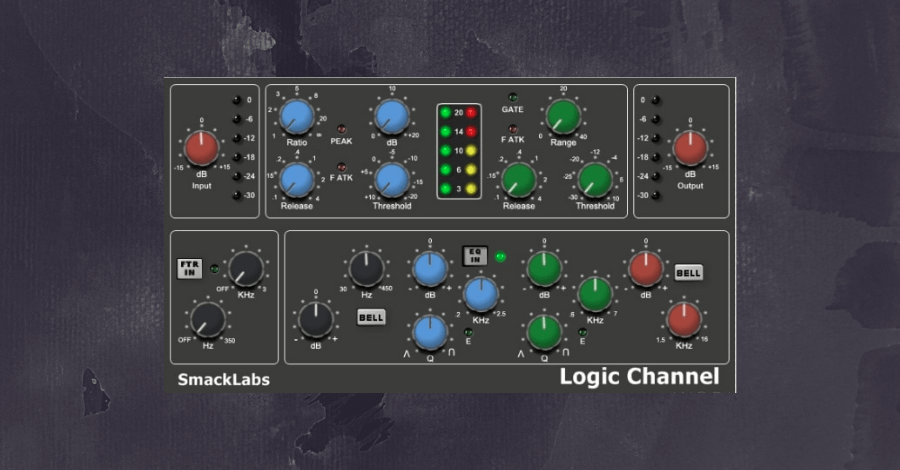
Price: Free
UX: You’ll notice a trend here - the toy version of the Waves and UAD plugins!
Character: Look, it’s a free plugin. Does it sound amazing? No. Does it sound pretty good for something that could be in your plugin library five minutes from now? Sure does. This plugin is also modeled off the 9000 series SSL (not 4000), so it is meant to sound a bit different.
Uses: Same as above. Generally a good choice for individual sound shaping, but can also be applied for some broad bus EQ.
Pro tip: My pro tip here is to download it and try my other pro tips if you don’t have an SSL EQ at your disposal already!

16. UAD Neve 1073
Price: $299
UX: This plugin is “old school cool”. The design is pretty simple, but it is insanely powerful.
Character: Warm, analog, lush, fat. You get the picture. If you want warmth on a sound, this plugin (or the Waves plugin below) is your best bet.
Uses: The Neve 1073 is an EQ and a preamp. This means that the EQ is applied when we record a sound — or in the case of digital synths and samples, at the beginning of our plugin chain. Think of these EQs almost as a sound design tool — not only will it recolor a sound, but it adds gloriously rich saturation and buzz to sounds when you drive the input.
Pro tip: Trying pushing a kick or a bass at 60Hz. Commence speaker explosion.
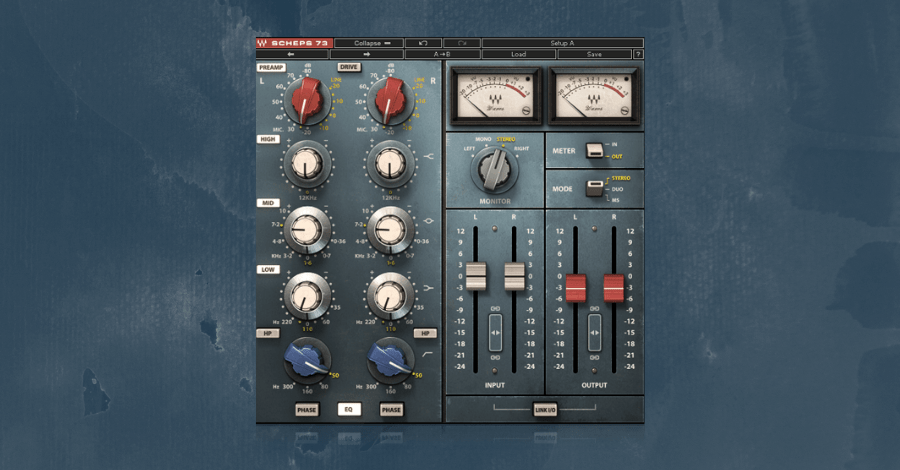
17. Waves Scheps 73
Price: $59
UX: A similar design to the UAD version, but the Scheps 73 Neve emulation offers intuitive stereo and dual-mono controls. This plugin is more versatile than the UAD version, and fortunately, the versatility doesn’t come at the expense of complication.
Character: Pretty much the same as the above, but slightly less rich and warm.
Uses: Again, same as the above. But, the advantage of the Scheps 73 comes in its dual-mono capability, meaning that we can easily EQ the left and right channels separately. This is a great way to add a little extra stereo width to sounds like strings and pads.
Pro tip: Click the Link I/O button and crank away on the input gain. These will create increased harmonics and distortion and will automatically balance your boost with a reduced makeup gain.
Other Analog EQs
There are a handful of other analog-modeled EQs that are worth mentioning. We had to only pick three, so here are our favorites:
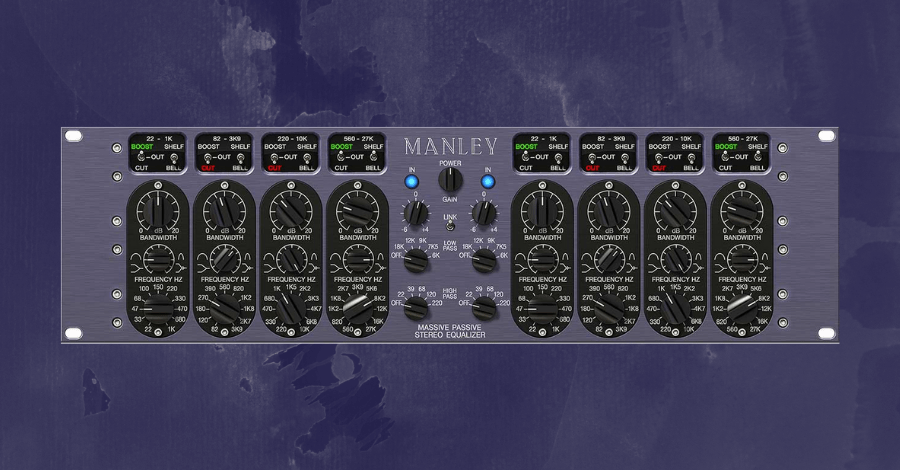
18. UAD Manley Massive Passive
Price: $299
UX: Straight up sexy. To be honest, it can look overwhelming at first sight. But once you get comfortable, this thing is a beast.
Character: This is one of the most sought after mastering EQs in the world, and Manley has officially endorsed the UAD emulation. It sounds smooth, lush, and adds density and body.
Uses: This isn’t a plugin for tweaking individual sounds or surgical EQ work. This is for busses or your master chain. Use it to add the last 10% to a mix with its creamy high end and warm tubes.
Pro tip: Add a subtle boost across the high end of your mixdown to add extra presence without inducing any harshness.

19. Soundtoys Sie-Q
Price: $99
UX: Simple, mysterious, and classic. You have a fixed low control, a fixed high control, an adjustable mid control, and a Drive knob. That’s it!
Character: This EQ is modeled off of the lesser-known Siemens W295b. This EQ’s value comes from its smooth and airy high end — you can get away with pretty extreme boosts.
Uses: This plugin is perfect for controlling brightness. I love adding it towards the end of a vocal chain for extra air or dialing back on the digital brightness of software synths.
Pro tip: Couple this with the Soundtoys Decapitator. Boost with Decapitator to add some extra warmth, and then add back in your high shelf with Sie-Q.
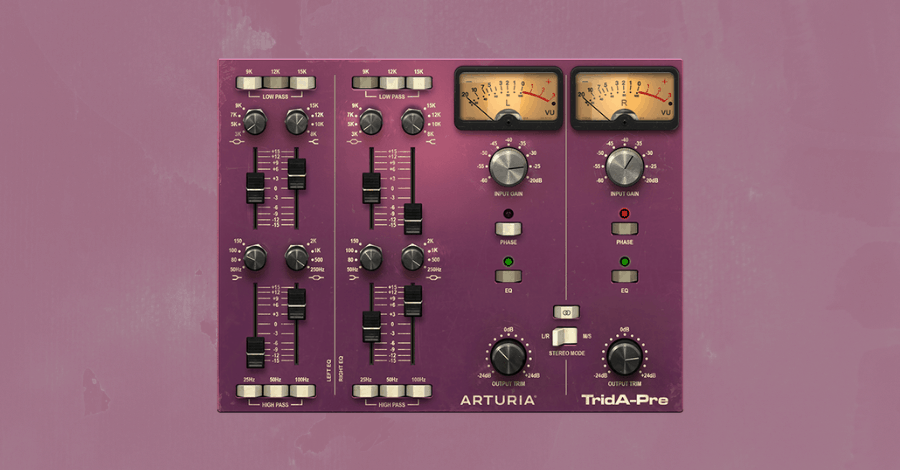
Price: $99
UX: Intimidating. There is a hell of a lot going on here. Each EQ pot has its own volume fader, and given that it also has dual mono capabilities, that means 8 separate faders for 8 different frequencies.
Character: Edgy, yet smooth mids and highs. There were only 13 of the original consoles ever made, but you’ve probably heard 100s of records mixed on them — The Beatles, Bowie, Elton John, etc. The sound of this EQ is synonymous with the pop music of that era.
Uses: Air and presence on vocals, boosting the mids for body on drum groups, and even cranking the input gain for some distortion or extra harmonics.
Pro tip: Like the Scheps73, EQ the left and right channels slightly differently in the dual-mono mode for extra stereo width.
Final Thoughts
You have tons of tools at your disposal, and I like to think that the best tools for you are the ones that you know best. That said, having a range of EQs in your arsenal is incredibly important for being able to effectively utilize both reductive and additive EQ in a variety of settings. Figure out which families of EQs you’re lacking, and pick some of our best EQ plugins in 2020 to fill in those gaps.
These Might Also Interest You:
7 Must-Know EQ Tips with Fab Filter Pro-Q2



